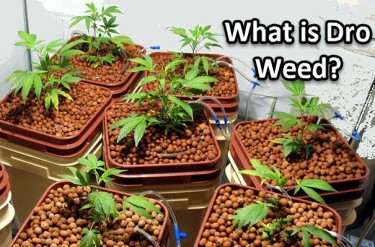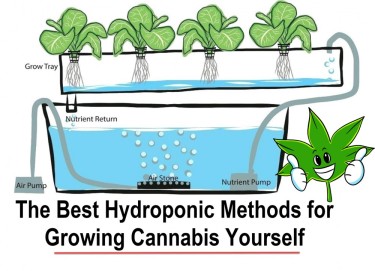
How do you prevent algae in your hydroponic cannabis grow?
Algae is an integral part of life and our ecosystem, as we know, but cannabis and algae just don’t mix. Frankly, algae infestation is a necessary evil in any hydroponic grow system. So it will be a pipe dream to think you can run an algae free hydroponic system.
But while this is true, you cannot just leave the cannabis hydroponic system infested with algae as it will be detrimental to cannabis growth. To that end, let’s take a look at some maneuvers to prevent and control the growth of algae in the system before it gets out of hand.
What are algae and how do they grow?
While the first thing that springs to mind when algae is mentioned is the sea, many find it surprising to learn that they can also flourish in hydroponic systems. Now the question arises, what makes algae possible?
What are algae?
Algae are simple plants with no stems, roots, or leaves that live in an aquatic environment. Algae need water to live, warmth, light and nutrients. Unfortunately, the hydroponic system provides these four conditions, therefore algae growth is strongly encouraged, especially in the reservoir.
Effect of algae on cannabis
When you look at the fragile and simple nature of algae, you might think about the damage these harmless plants could do. While algae looks harmless, there are so many reactions taking place beneath the surface. Remember that algae is another plant that grows in the same culture medium as your cannabis plant. Therefore, it naturally competes with cannabis plants for nutrients and oxygen, and while it doesn’t seem to need much, it still prevents your cannabis plant from reaching its peak.
Below are some of the ways algae can harm cannabis plants and the hydroponic system.
competition for oxygen; As previously mentioned, algae compete with cannabis for available oxygen for photosynthesis. This eventually becomes a big problem when algae grow out of control, consuming a lot of dissolved oxygen, which the cannabis plant also needs to grow.
pH fluctuations; Much like any other plant (including cannabis), algae absorb CO2 during the day (pH rise) and oxygen at night (pH drop). This fluctuation in pH most often prevents cannabis plants from absorbing nutrients, reducing their vigor and health, ultimately leading to symptoms such as spotted leaves.
Smothering the hydroponic system: Algae usually appear first as a delicate greenish layer of slime. These thin slimes are usually found on the walls of containers, reservoirs, pipes, hoses, and pumps. However, these thin films of mucus usually thicken and begin to clog the system by interfering with the air, nutrient, and water supply to the roots of the marijuana plant.
Creation of a suitable environment for anaerobic pathogens: By reducing dissolved oxygen in the hydroponic system, algae promote ideal climate conditions for the growth and reproduction of fungi and bacteria. These microbes then feed on the roots of the cannabis plants.
promote pest infestation. Algal blooms are known to facilitate infestation by pests such as fungus gnats, whose larvae invade the stems and roots of cannabis plants.
Compromising Roots: When algae infestation is severe, they often coat the root ball of cannabis plants, denying it access to nutrients and oxygen. The thrush also depleted the roots, making them more susceptible to harmful bacteria and fungi.
How to manage algae in a hydroponic growing system.
Considering the damage an algae infestation can do to both your cannabis plant and the hydroponic growing system, it is important to get rid of it quickly once it manifests. However, one must first learn how to recognize algae, and from there the proper treatment and preventative measures can be determined.
ID
Algae generally appear as a thin film of greenish slime. However, some also have a distinctive color such as brown, black or red, but this was unheard of in a hydroponic system. Determining the physical markers of algae is very easy, although these plants are very good at hiding in the shade.
Without a visual indicator, a good way to spot algae growth is with a deep, long sniff. If you notice an earthy and musty smell from the room, then there is an algae infestation. It is also important to pay a lot of attention to the leaves of cannabis. When the leaves turn yellow and the roots start to squirm, the damage is done and the only treatment left.
treatment
As far as treatment goes, a very common approach is to use hydrogen peroxide to clean the hydroponic system after an algae infestation. A solution of 10 parts water and 1 part hydrogen peroxide should be prepared. Then the solution is regularly mixed into the reservoir in very small amounts.
Aside from removing the algae, the solution increases the dissolved oxygen levels in the water. One caveat with this treatment, however, is that it should only be performed on adult plants. After cleaning, make sure to coat any transparent hydroponic components with opaque materials to reduce light penetration.
prevention
When it comes to prevention, there are several options to explore. Because heat, moisture, and nutrients cannot be removed from the setup, one variable that can be controlled is light. Controlling light penetration starts with designing your setup. The idea is to try to prevent light from reaching the reservoir and wet areas in the facility.
If you’ve already used transparent devices, you can always wrap them in aluminum foil to keep light out. Aside from light, microbes also need to be controlled and a simple installation of UVC light in the air filtration system should solve that. After all, algae aren’t known for praising running water. Therefore, you can install a pump in your system to keep the water flow moving.
Conclusion
It is well known that algae do not pose major problems at first glance, but the damage will be done sooner rather than later. Prevention is said to be better than cure, so we advise you to take steps to prevent this before it happens and gets out of control. We hope this article will help you troubleshoot your hydroponic setup.
MORE ABOUT DRO WEED, READ THIS..

WHAT IS DRO WEED EXACTLY? READ THIS…
OR..

HYDROPONIC GROWING SYSTEM THAT WORKS AT HOME?

Post a comment: